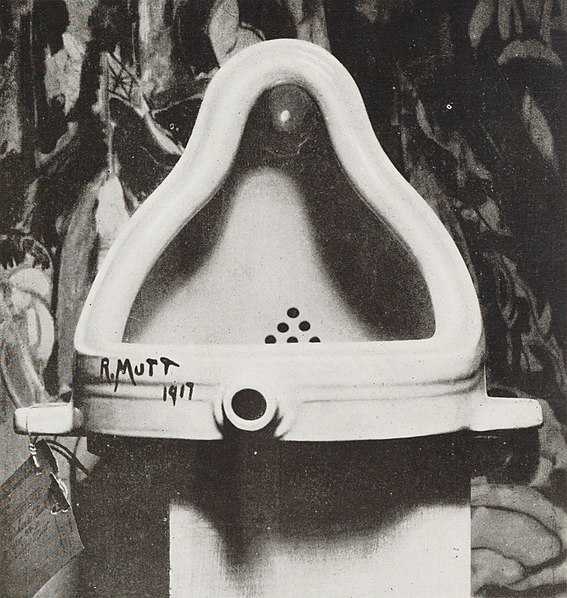Dadaism was an art and literary movement that peaked in Zurich, Switzerland between 1916-1922, before the Second World War began in 1939. The movement was considered to rebel against the war, politics and the government. This movement would soon spread around internationally, even after WWII was over in 1945, to places from Europe to New York City. Dadaism more often than not, overlaps quite well into surrealism, because sometimes the art and literature can have a sort of surrealistic feeling from time to time. It should be noted that Dadaism had actually influenced Surrealism as the artists had to think up ideas for artwork by trying not to think and let their imagination speak for itself. The surrealists had intended to continue the idea of a stream of the human conscience.
The key people that both pioneered and involved themselves with this movement were Hugo Ball, Emmy Hennings, Hans Arp, Raoul Hausmann, Hannah Hoch, Johannes Baader, George Grosz, Tristan Tzara, Richard Huelsenbeck, Beatrice Wood, Hans Richter, (who considered Dadaism 'anti-art'.) Marcel Duchamp (who's work were highly influential towards the development of conceptual art.) and several others. They had wanted this 'anti-art' form to be rather abstract, similar to Cubism, but they had wanted to do something new, while borrowing a lot of it's main influences from Abstraction and Expressionism, with Cubism becoming a part of it's influence later on (and to a lesser extent, 'Futurism'.) Dadaism can come in different forms of art including 2D and 3D collage (assemblage), photo-montage, (which are satirical collages that are created by using photographs.) and ready-mades (which are basically objects that the artists would purchase, modify it into something new and declare that object as art.) The public was at first disgusted by how the artwork was displayed-which was what the artists were initially encouraging at the time. This was due to the artists wanting to provoke the public on purpose, and then it got people into a huge debate of questioning what art really was.
Here are some famous examples of Dadaist "artwork".
This piece is a 'Readymade'
 |
| Marcel Duchamp, Fountain, 1917, Photograph by Alfred Stieglitz |
"It has become the work that removed art to the cerebral realm from the physical – or the “retinal” as Duchamp liked to call it – enabling Minimalism, Conceptualism, Performance Art and just about every other significant development of the past half century. It is the work, in short, that got art where it is today."
(Quote from http://www.telegraph.co.uk/culture/art/art-features/9842887/Marcel-Duchamp-His-influence-is-still-everywhere-in-contemporary-art.html)
In other words, every art movement that was developed in the early twentieth century has been influenced by Duchamp's idea that art comes from the mind, and through physical means.
This another Readymade'
 |
| Marcel Duchamp, L.H.O.O.Q. 1919, original "Mona Lisa" by Leonardo Da Vinci, 1517 |
This an assemblage'
 |
| Raoul Hausmann, Mechanical Head, assemblage, circa 1920 |
This a photomontage'
 |
| Raoul Hausmann, ABCD (self portrait), photomontage from 1923-24 |
So in conclusion, Dadaism is an art form that not only encourages people to create artwork by mashing up various sources through different media, (even though the original intention was to satirize political agendas and the war,) it is also a basically fun method to express yourself through art, even if it were for more controversial reasons to other artists.
And now this it is time for me to move on towards my FMP, so see you in the next blog post.



































